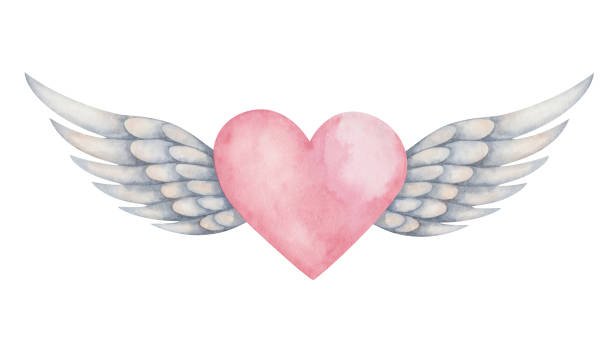My History:
My personal journey to becoming a bodymind therapist began with my own struggle with depression in my early twenties. I tried medication, several talk therapists, and felt deeply depersonalized by the care I received. I embarked on a journey of reclaiming my heart, emotions, and movement during my twenties, experiencing the beginnings of my own release of trauma and shame, and understanding for the first time in my life the experience of solid selfhood and empowerment. In my late twenties I heard the term “Somatic Therapy” and was deeply intrigued, a curiosity which led to my immersion into graduate school for Clinical Mental Health Counseling with an emphasis in Somatic Psychology through Prescott College and completing advanced training in trauma-informed Hakomi Mindfulness-based Somatic Psychotherapy and Experiential Attachment Psychotherapy through the M.E.T.A. Institute in Portland, OR. In 2020, I also became a level I AEDP (Accelerated Experiential Dynamic Psychotherapy) therapist, further expanding my skills for supporting the healing of attachment trauma.
As one of the only Hakomi and Experiential Attachment-based therapists in SE Michigan, I offer a unique approach to therapy that is deeply relational, integrative, and effective in supporting long-term growth and vitality.
More recently, I’ve followed my heart’s calling to branch out into the realm of breathwork journeys in addition to offering somatic psychotherapy sessions. My intention with breathwork is to lean into the missing experience of transmutation, energetic release, pleasure, and joy that can come through allowing the body to unfold and recharge through the breath while anchoring into positive consciousness shifts in the body. I’ve also chosen to move deeper into my own personal alignment as a healer and guide by no longer following the Western Medical Model normality of providing my clients with mental health diagnoses unless requested or needed for insurance purposes. Though these diagnostic frameworks can be helpful as just that—frameworks—and for developing dialogue, I honor the flexibility and plasticity of the human brain and body, it’s amazing ability to “make sense”, its tremendous resilience, its mystery, and the beauty of listening to its wisdom and following its impulses to heal, grow, and expand into wholeness.
Some Thoughts on “Somatic Therapy”…
If you’re new to the term “Somatic Therapy” or you’ve heard of it and got intrigued but have never experienced it before: Welcome. Because I am so committed to the belief that we are embodied, whole beings—holographic even—I am a huge advocate of any wellness journey incorporating the “soma” or body. Amongst the different “somatic” wellness approaches, you’ll find a deep intrinsic question: to heal, do we move toward pain, or pleasure?
As a helper and guide in the healing process, this is a question I have grappled with very intimately. What is the value of moving in an experiential way toward pain? Do we need to move toward our painful memories and emotions to find freedom?
Conversely, what is the value of moving toward pleasurable experiences, such as emotions of joy, peace, inner harmony, gratitude or visualizations of ourselves experiencing these states?
Is Pain required to move toward Pleasure?
It is this question that has inspired much experimentation in my own healing process as an individual and has guided me to now offering multiple healing options in my practice. My hope is that you may find a path that begins and expands in such a direction that feels attuned to where you’re at. Though each of these offerings certainly can incorporate moving toward pain (grief, anger, fear, rejection, abandonment, memories), some are really designed to do that deep dive toward the past. Somatic Psychotherapy and Hakomi, for instance,, are oriented to support making sense of yourself and your life. This may incorporate building the capacity to sit with pleasure and goodness in your experience, and it will certainly involve being with any repressed pain in your body that may need to be released.
Breathwork journeys are very different than therapy and Hakomi in that they’re 2 hour experiences that involve a very intentional stimulation of the vagus nerve, creating a parasympathetic state in the body: an open, being state capable of feeling states such as bliss and ecstasy. Breathwork may bring forward deep pain as well, but breathers often have spiritual or bliss experiences that feel very vulnerable and expansive. Being that we are holographic beings, every time we move toward the body and trust its unfolding it leads us in directions we cannot always anticipate, but this is a brief explanation of my process around this query and desire to support both continuums of the healing journey.
Background and Education
(Present)
—Wild Woman Project Circle Facilitator training
—Continuing education in Complex Integration of Multiple Brain Systems treatment modality
(Past)
—Co-Healer Level 1 Breathwork Facilitator through Shamama Breathwork
—AEDP (Accelerated Experiential Dynamic Psychotherapy) Immersion training (5 days of full-time training)
—Experiential Attachment Psychotherapy training through the M.E.T.A. Institute (120 hours of in-person training)
—Masters of Science in Clinical Mental Health Counseling with a emphasis in Somatic Psychology Prescott College
—2 Year M.E.T.A. Comprehensive Hakomi Training (400+ hours of in-person training)
—1 Year Clinical internship at the M.E.T.A Clinic, Portland, OR
—6 Month Clinical Practicum at the Trauma Healing Project, Eugene, OR
—Bachelors of Arts in English Covenant College
“And did you get what
you wanted from this life, even so?
I did.
And what did you want?
To call myself beloved, to feel myself beloved
on the earth.”
— Raymond Carver


